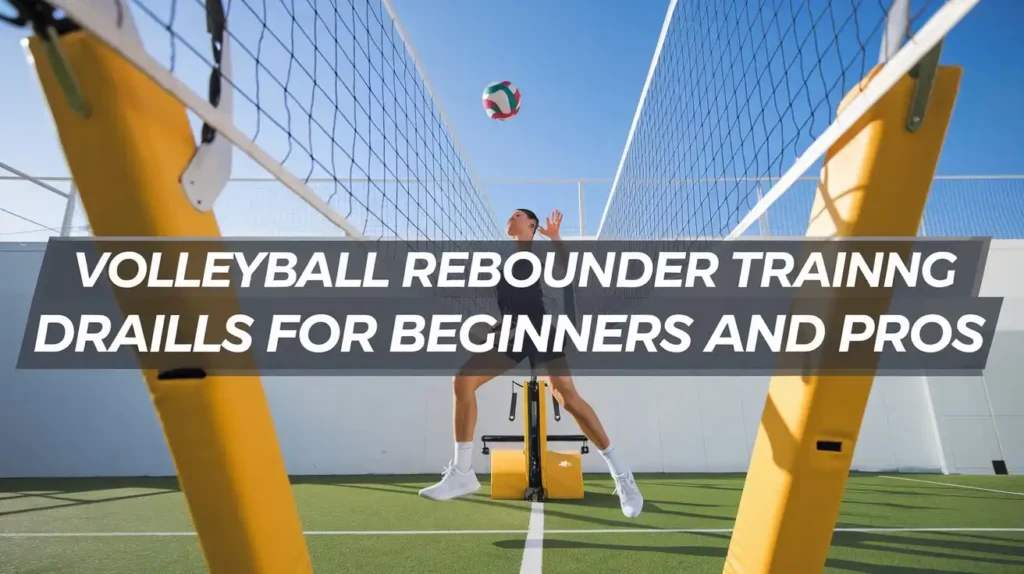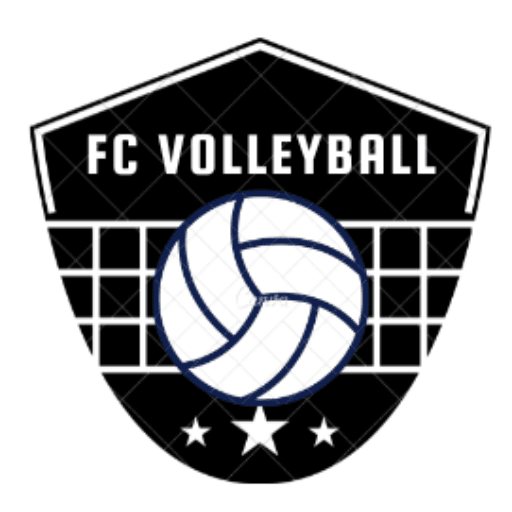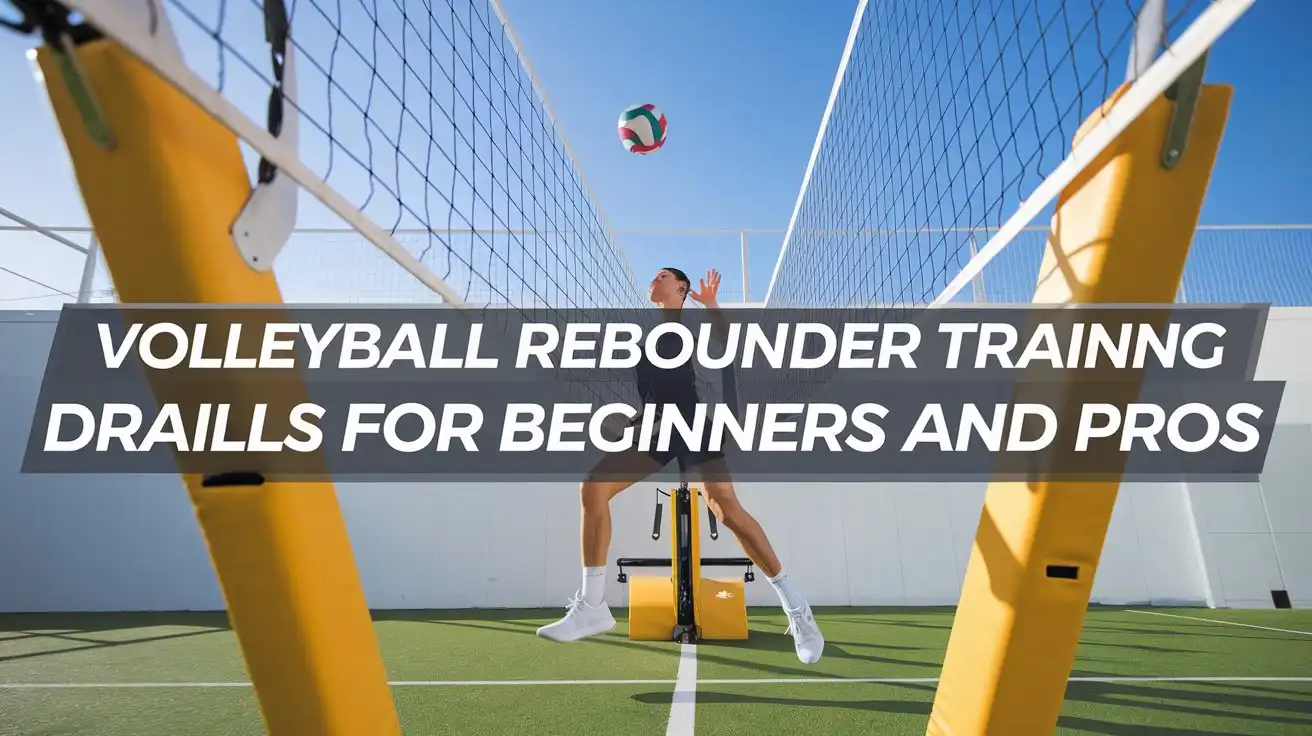Why Volleyball Rebounders are Essential for Training? A volleyball rebounder is a vital tool for improving your skills both on and off the court. It allows you to practice critical techniques, including passing, setting, and spiking, without needing a partner. Rebounders offer versatility for athletes of all skill levels, from beginners to pros, with drills that help reinforce core volleyball skills. In this article, we will explore effective volleyball rebounder training drills, including beginner and advanced techniques, and provide essential training tips for maximizing your performance.

Volleyball Rebounder Drills for Beginners
For beginners, the focus should be on mastering the basic skills of volleyball. Here are some simple yet effective drills to get started:
- Passing Drill: Stand a few feet away from the rebounder and toss the ball lightly against it. Practice receiving the ball using the correct forearm passing technique. Aim to maintain a steady and controlled pass back to the rebounder.
- Setting Drill: Position yourself a little closer to the rebounder. Toss the ball up and hit it against the rebounder, practicing your setting technique. Ensure you use proper hand positioning and aim to keep the ball’s trajectory consistent.
- Underhand Serve Practice: Use the rebounder to simulate serving. Hit an underhand serve toward the rebounder and focus on controlling the ball’s direction and height as it comes back.
- Reaction Drill: Stand in a ready position and hit the ball at an angle against the rebounder. React quickly to where the ball bounces back, mimicking game scenarios where you must adjust to unexpected returns.
- Consistency Challenge: Set a goal to pass or set the ball a specific number of times without letting it hit the ground. This helps build endurance and precision.
These drills help beginners build confidence while reinforcing proper techniques. Repetition is key, so dedicate time to practicing each drill consistently to develop a strong foundation in volleyball skills.
Advanced Volleyball Rebounder Training Drills
Once you’ve mastered the basics, it’s time to take your skills to the next level with more advanced drills. These exercises will help improve your reaction time, power, and precision in high-intensity game scenarios. Here are some advanced drills to get you started:
- Drill 1: High-Intensity Passing
To simulate real game conditions, this drill focuses on quick and powerful passes. Position the rebounder at a moderate angle, and alternate between forearm and overhead passes at a fast pace. The goal is to keep the ball in motion while making accurate, high-speed passes. This exercise helps improve both your passing speed and precision, which are essential during fast-paced match play. The high-intensity nature of the drill also builds endurance and strengthens your muscles.
- Drill 2: Spiking Precision and Power
A key skill for advanced players is delivering accurate and powerful spikes. To practice this, position the rebounder at an adjustable height, allowing you to aim for specific spots on the rebounder after a strong spike. Focus on hitting different areas of the rebounder to improve your control and power. By perfecting your aim and spiking technique, you can replicate the conditions of an actual game where every hit counts. This drill will boost both your spiking power and accuracy, two crucial attributes for any advanced volleyball player.
- Drill 3: Defensive Reflex Training
Volleyball often requires quick reflexes, especially when the ball is coming from unpredictable angles. For this drill, set the rebounder at random angles to make the ball bounce in various directions. The goal is to react quickly and adjust your position after each rebound, helping you develop lightning-fast reflexes and agility. The unpredictability of the ball’s movement simulates real-game situations, allowing you to work on your defensive responses in a safe, controlled environment.
- Drill 4: Combo Drills for All-Round Skills
To enhance your all-around skills, try combining multiple drills into a single routine. This could include alternating between passing, setting, and spiking in a fluid sequence. For example, start with passing the ball to the rebounder, immediately follow with a set, then spike the ball back toward the rebounder. By combining these skills, you’ll be better prepared for game scenarios where you need to switch between different techniques on the fly. This drill helps improve coordination, reaction time, and versatility on the court.
Essential Tips for Effective Rebounder Training
To make the most of your volleyball rebounder training, it’s important to focus on specific strategies that will maximize your performance and improve your overall skills. Here are some essential tips to help you train effectively:
- Focus on Form: Proper technique is crucial for success in volleyball. Whether you’re passing, setting, or spiking, always prioritize correct form. For example, when passing, keep your arms straight and your wrists locked to ensure the ball stays on target. When setting, use your fingertips to create a stable platform, and for spiking, make sure your approach is quick and powerful. Consistently focusing on form will help you avoid developing bad habits that can be difficult to correct later.
- Consistency and Repetition: Training regularly is key to improving your skills. The more consistent you are with your drills, the quicker your muscle memory will develop. Set aside time each day or week to practice on the rebounder, focusing on one or two drills at a time. Repeating drills over and over may seem tedious, but it’s the best way to improve your reaction time, accuracy, and overall technique.
- Adapt the Difficulty: As you progress, don’t be afraid to challenge yourself by increasing the difficulty. For beginners, start with simple drills, like passing at a slower speed, and gradually increase the intensity as your skills improve. For advanced players, adjust the angle of the rebounder or try faster-paced drills. Increasing the difficulty will help you develop more advanced skills and build confidence for real-game situations.
- Track Progress: To ensure you’re improving, it’s important to track your progress. Keep an eye on your accuracy, speed, and technique over time. You can use a journal or even record videos of your practice sessions to review your performance. Tracking your progress will help you see where you need improvement and keep you motivated as you work towards your goals.
By following these tips, you can get the most out of your volleyball rebounder and make continuous progress in your training. With consistent effort and a focus on technique, you’ll be able to see significant improvements in your skills.
Common Mistakes to Avoid During Rebounder Training
While practicing with a volleyball rebounder can be incredibly effective, it’s important to avoid certain mistakes that could hinder your progress. Here are some common errors that players should be aware of and how to prevent them:
- Incorrect Positioning of the Rebounder: One of the most common mistakes is setting up the rebounder at an improper angle or distance. If the rebounder is positioned too close or at the wrong angle, the ball may not rebound in a predictable way, making it difficult to practice effectively. To avoid this mistake, always adjust the rebounder to a suitable angle based on the specific drill you’re doing. For passing, a slight angle works well, while for spiking or defensive drills, a more dynamic setup may be needed to simulate real-game conditions.
- Over-Reliance on the Rebounder: While the rebounder is a great tool for solo practice, it’s important not to become overly reliant on it. Volleyball is a team sport, and using the rebounder exclusively for training can limit your ability to perform in actual game scenarios. It’s crucial to practice with teammates, work on communication, and simulate match conditions regularly to ensure you’re prepared for the dynamics of a real game.
- Neglecting Warm-Ups and Cool-Downs: A common mistake players make is diving straight into their training without warming up properly or neglecting to cool down afterward. Without proper warm-ups, you risk injuring yourself, especially when performing high-intensity drills. Make sure to stretch and warm up your muscles before each session and cool down afterward to reduce muscle tension and prevent injuries.
- Not Adjusting to Personal Progress: As you become more experienced with the rebounder, it’s important to adjust your training to match your current skill level. Continuing to do drills at the same speed or difficulty without increasing the challenge can lead to stagnation. Gradually increase the intensity and complexity of your drills to keep pushing your limits and improving your skills.
By avoiding these mistakes, you can ensure that your rebounder training is effective, efficient, and beneficial for improving your volleyball game.
Choosing the Right Volleyball Rebounder for Your Training
Selecting the right rebounder is crucial for maximizing your training sessions. Not all rebounders are created equal, so understanding what to look for can make a big difference in your development as a player. Here are the key features to consider when choosing the perfect volleyball rebounder for your needs:
Top Features to Look For:
- Durability: Since volleyball training often involves powerful passes, spikes, and continuous ball rebounds, it’s important to choose a rebounder made from durable materials. Look for rebounders that are constructed with strong, weather-resistant frames and netting. Steel frames and reinforced nets tend to last longer and can withstand the high impact of repeated ball returns.
- Adjustability: An adjustable rebounder is essential for practicing a variety of skills. Look for models that allow you to change the angle or height of the rebounder, as this will let you customize your drills. For example, setting the rebounder at a lower angle is great for passing drills, while adjusting it to a higher angle can help with spiking and setting practice.
- Portability: If you plan to practice on the go or move your training sessions around, portability is an important factor. A lightweight, foldable design makes it easy to store and transport your rebounder. Models with wheels are especially helpful for easy movement, allowing you to set up your practice space quickly, whether indoors or outdoors.
- For Beginners: If you’re just starting out, consider a rebounder with adjustable height and a wide net. A model like the Adjustable Volleyball Rebounder is great for beginners due to its simplicity, adjustability, and durability. It’s easy to set up and offers a stable platform for practicing basic drills.
- For Advanced Players: For those looking for more complex training, the SKLZ Rebounder offers superior adjustability and a large target area, making it perfect for high-intensity drills and varied training techniques. Its robust frame ensures longevity and stability, even with more intense practices.
By selecting the right volleyball rebounder based on these features, you can enhance your training experience and progress more effectively in your volleyball skills.

